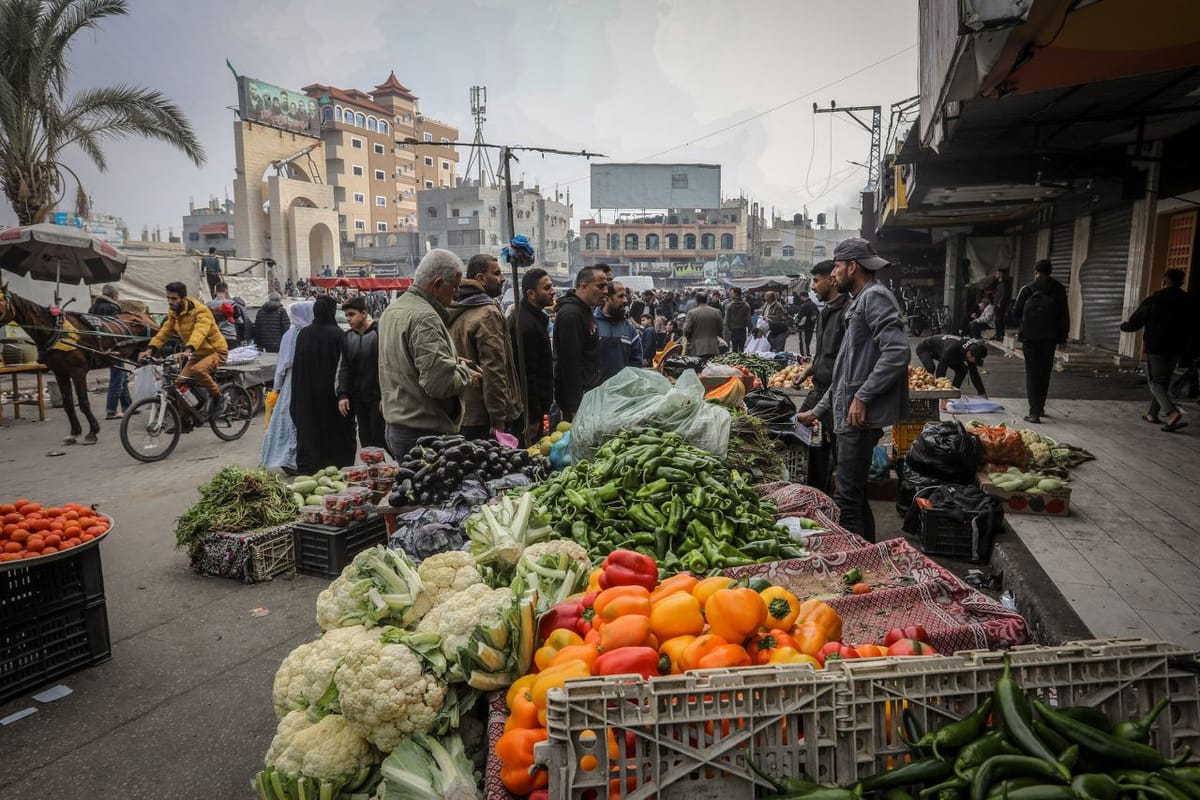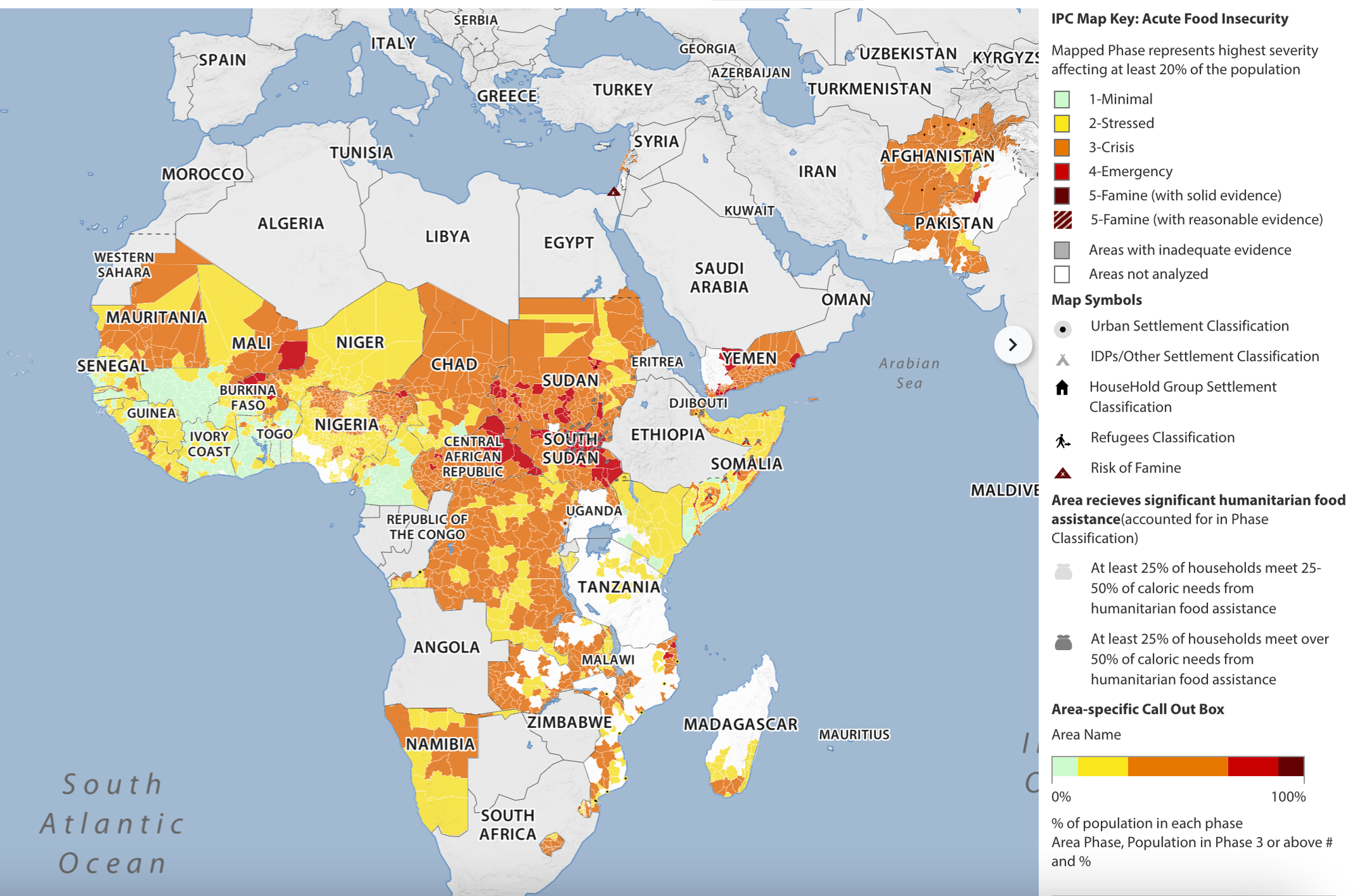Famine in Gaza as a Weapon of Israel

Around mid-March 2024, several official media outlets began circulating reports that Israel was using famine in Gaza as a weapon.
This claim was also used by the Chief Prosecutor of the Hague Tribunal as one of the arguments for issuing arrest warrants for key Israeli figures.
This narrative has also been supported by various private bloggers and information agents who position themselves as "pro-Palestinian" or "pro-peace.
This narrative emerged after the IPC (Integrated Food Security Phase Classification) — a non-governmental organization that works with UN programs such as UNICEF to monitor famine issues in various countries - released a report indicating that famine in the region could begin at any moment.
What does “at any moment” mean? IPC divides famine into five phases: phase 2 - stress, phase 3 - crisis, phase 4 - emergency, and phase 5 - catastrophe.

Initially, the famine was expected to last from November to February, but the number of people in different phases varied.
After reviewing this analysis, the FRC concluded that famine is inevitable and expected by the end of May 2024.
The previous IPC analysis, conducted by the Non-Technical Working Group (NTWG) in March 2024, predicted that famine (IPC Phase 5) would begin on July 15, 2024. The April 2024 FEWS NET analysis includes the current analysis for the period April 1 through April 30, 2024, and a projected analysis for the period May 1 through July 31, 2024, using the IPC protocols and evidence requirements for the current and projected classifications, respectively.
In response to this, the following demands were made of Israel:
- Immediately cease hostilities.
- Ensure unhindered access to the sector for all humanitarian missions.
However, the IPC report points out that it is based on outdated assessments and overlooks efforts to increase aid to Gazans still living in the north.
This means that all these claims are very similar to the South African case before the International Court of Justice, which is based on the “risk of genocide,” rather than on whether or not genocide has been committed.
Here is another report by the organization COGAT, which provides full information on the amount of food and medicine delivered to the sector.
Finally, we have the fact that the UN and its structures have been unable to organize the delivery of humanitarian aid to the sector. This includes a failed US project with a $320 million pier that was destroyed by ordinary waves and had insufficient capacity even when it was operational. The entire organization of humanitarian aid delivery fell on Israel's shoulders.
For example, here is the data from May 26.
*The 70 trucks delivered represent about 15% of the estimated minimum daily needs for a population of over two million people and are well below the original target of 90 trucks per day.
On June 4, 2024, a new IPC report was released, confirming everything written above. This report is based on the backdrop of the FRC analysis.
What do we have in the report?
FRC Conclusion: FRC does not find the FEWS NET analysis credible, given the uncertainty and lack of supporting evidence used in the analysis. Therefore, FRC is unable to determine whether the famine thresholds were exceeded in April.
Forecast (May 1 - July 31, 2024)
- FEWS NET Classification: Famine (IPC Phase 5) with adequate evidence.
- FRC Conclusion: Since FRC does not find the FEWS NET analysis credible for the current period, FRC cannot support the IPC Phase 5 (Famine) classification for the forecast period. However, this FEWS NET forecast is consistent with FRC's March 2024 forecast, which has not yet been updated.
FRC would like to take this opportunity to make two very important points:
- All stakeholders using the IPC for key decision-making should understand that the confirmation of the famine classification does not change the fact that there is undoubtedly extreme human suffering in the Gaza sector and does not change the urgent humanitarian need to address this civilian suffering by ensuring full, safe, unimpeded and sustained humanitarian access to the Gaza sector and the entire territory, including the cessation of hostilities. All participants should not wait for confirmation of the current period's famine classification to act accordingly.
- FRC would like to emphasize that the very fact that we cannot confirm (or refute) the FEWS NET analysis is due to the lack of crucial up-to-date data on the well-being of people in northern Gaza and the Gaza sector as a whole. Therefore, FRC urges all parties to ensure humanitarian access in general, and in particular to provide the opportunity to conduct field studies in northern Gaza in order to obtain more robust evidence on food consumption, nutrition and mortality.
In summary, the organization calls for "doing the right thing," "not starving people," but cannot confirm that Israel has ever used famine as a weapon.
The report then explicitly states that despite the previous report indicating that the process would begin by July, this has not occurred. Furthermore, the subsequent report lacked sufficient data to draw definitive conclusions.
Based on this, they conclude that “although we believe the people in the sector are going through severe trials,” we do not have and cannot have enough data to conclude that there is indeed a famine in the Gaza sector.
The next part of the report states that the amount of food entering the sector has increased significantly, but they cannot say if it is enough (at the same time they cannot say that it is "not enough"): Since the FRC review in March 2024, there has been a significant increase in the number of food trucks entering northern Gaza. The FEWS NET analysis confirms that humanitarian assistance in this area has increased significantly, showing that the availability of calories from humanitarian assistance increased from 9% in February to 34-36% in March and 59-63% in April. The opening of alternative routes at the Rafah and Kerem Shalom crossings, the permitting of commercial trucks, and airdrops have increased food availability. However, the extent to which this has been and will be sufficient to alter the trends identified in the previous analysis remains uncertain.
Even with this reported increase in food trucks entering the Gaza sector, it is likely insufficient to overcome months of deprivation, and the IPC famine threshold for food consumption requirements may have been exceeded, but given the wide range of data interpretations and uncertainties, FRC cannot make a determination.
Then comes a very interesting moment. IPC shows what the FEWS NET report "left out" of its analyses and reports:
- The FEWS NET analysis excludes the contribution of commercial and/or private deliveries, which may account for 1,820 to 3,850 cubic tons of food in March and about 2,405 to 4,004 cubic tons of food in April 2024. Although the intervals are extremely wide, indicating a high level of uncertainty, this corresponds to the possible exclusion of about 25-76% of daily caloric needs coverage in March and 34-82% in April.
- The FEWS NET analysis excludes the contribution of WFP (World Food Program) deliveries to bakeries in northern Gaza, including 940 cubic tons of flour, sugar, salt, and yeast in April. Although the intervals are extremely wide, indicating a high level of uncertainty, this corresponds to the possible exclusion of about 4-15% of daily caloric requirements.
- The FEWS NET food availability analysis attributes a value of 3,640 calories per kg for unspecified WFP food aid delivered by trucks and 2,657 calories for unspecified food aid delivered by air and sea. FRC estimates that these values may be significantly higher or lower.
In other words, the FEWS NET report excluded most of the food deliveries to the sector, that “misled” IPC. Simply put, the UN and their satellite organizations did not count the humanitarian aid that did not go through them (although COGAT's data is regularly updated on their website). And that is more than half of the goods that went to the sector.
What does this mean? According to the FEWS NET report, 59-63% of the daily caloric requirement was "met", when in fact it was 75-109%. Some estimates are as high as 157%. This is all according to IPC data.
In conclusion, the report found:
- Significant increase in food availability from February to March and April.
- Almost 100% of daily caloric needs were available to the population of 300,000 people in April, even using conservative estimates.
IPC recommends that FEWS explore other methods of "collecting and analyzing information" for wider public dissemination.
Then the report discusses social, financial, and infrastructure availability, where IPC, apparently to avoid repeating mistakes, explicitly states - “we do not have sufficient information to judge this.”
And now the main question, will anyone apologize to Israel for the accusation of using famine as a weapon?
The question is rhetorical, of course.
Written By: Leonid Goldenberg, private journalist, founder of Mesusah (non-profit volunteer media project)